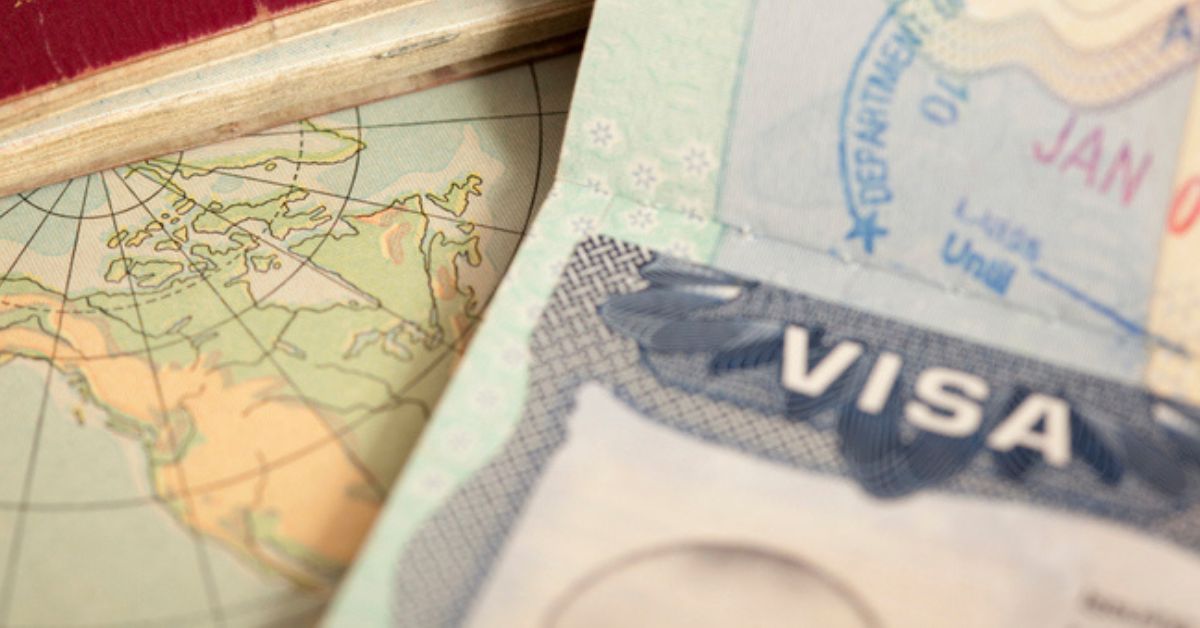Eligibility Criteria for the Visa Waiver Program
Participating Countries
The Visa Waiver Program (VWP) offers a convenient way for citizens of certain countries to visit the United States for tourism or business without the need for a visa. As of now, there are numerous countries whose citizens are eligible for this program. These include various European nations, select Asian countries, and others from different continents. It's important for travelers to check the most updated list of participating countries, as this can change based on diplomatic relations and security agreements. Being a citizen of one of these countries is the first step in qualifying for the VWP, but it's just one piece of the puzzle.
Passport Requirements
When considering the VWP, it's crucial to understand the passport requirements. Travelers must possess an e-passport, which includes an embedded electronic chip. This chip enhances security by storing the same information that is printed on the passport's data page: the holder's name, date of birth, and other biographic information. Additionally, the e-passport has a digital photograph that can be used for biometric comparison through facial recognition technology. The advanced security features of the e-passport are designed to combat fraud and improve the integrity of the VWP.
Other Eligibility Conditions
Beyond the type of passport and country of citizenship, there are other eligibility conditions that must be met. For instance, travelers should have no prior visa denials by the United States, as this could disqualify them from using the VWP. Additionally, they must not have a criminal record or any history of violating U.S. immigration laws. It's also essential for VWP applicants to have authorization through the Electronic System for Travel Authorization (ESTA) before traveling. These stringent criteria ensure that the VWP is used as intended and helps maintain the security of U.S. borders.
Understanding the Electronic System for Travel Authorization (ESTA)
ESTA Application Process
The ESTA application process is a critical step for travelers wishing to take advantage of the VWP. This online system assesses a traveler's eligibility to enter the United States under the program. The application requires personal information, travel details, and answers to eligibility questions. It's advisable to apply for ESTA at least 72 hours before your intended travel date, although decisions are often made within seconds. A successful application is linked electronically to the traveler's passport and is a prerequisite for boarding a U.S.-bound airplane or vessel.
ESTA Fees and Validity
Applying for ESTA involves a fee, which covers the cost of processing the application. It's important to note that the fee is non-refundable, even if the application is denied. Once approved, an ESTA is typically valid for two years or until the passport expires, whichever comes first. During this period, travelers can make multiple trips to the United States without reapplying, as long as each visit does not exceed 90 days. Keeping track of the ESTA validity period and ensuring it aligns with your travel plans is essential to avoid any disruptions.
Troubleshooting Common ESTA Issues
Applicants may occasionally encounter issues when applying for ESTA. Common problems include mistyped information, outdated or ineligible passports, or failure to meet eligibility requirements. If your ESTA application is denied, it's crucial to understand the reason behind the denial and explore alternative options, such as applying for a visa. For those with approved ESTAs, it's wise to keep a printed copy of the authorization with your travel documents, even though it's not a mandatory requirement, as it can serve as a handy reference if questions arise during your journey.
Travel Restrictions and Rules Under the VWP
Length of Stay and Purpose of Visit
The VWP is designed for short-term visits to the United States, with a strict limit of 90 days per visit. This timeframe is intended for tourism, business, or transit purposes. It's important to have a clear understanding of the permitted activities under the VWP, such as sightseeing, attending business meetings, or short-term recreational courses. Work, study, or long-term residency is not allowed under the VWP, and attempting to engage in these activities can lead to serious immigration consequences.
Adjusting Status on the VWP
Adjusting status, or changing one's immigration classification while in the United States, is generally not permitted under the VWP. This means that travelers cannot typically switch from VWP status to another type of visa or adjust to permanent residency. There are rare exceptions, but these are complex and require careful legal consideration. It's crucial for VWP travelers to respect the conditions of the program and plan accordingly if they intend to seek a different immigration status in the future.
Overstay Consequences
Overstaying the permitted 90-day period under the VWP can have severe implications. It may result in being barred from using the VWP in the future and could affect one's eligibility for U.S. visas. Overstays are taken seriously and can lead to deportation or an entry ban. It's vital for travelers to monitor their length of stay and ensure they depart the United States within the allowed time frame to maintain their eligibility for future travel under the VWP.
Required Documentation and Preparation for VWP Travel
Supporting Documents for ESTA Application
When applying for ESTA, it's essential to have all necessary supporting documents on hand. This includes a valid e-passport from a VWP-participating country, a credit card to pay the application fee, and additional travel details such as contact information and U.S. destination addresses. It's also wise to have information about your employment and a brief travel itinerary ready, as these may be requested during the application process. Being well-prepared with the correct documentation can streamline the ESTA application and reduce the likelihood of delays or denials.
Preparing for the Port of Entry
Upon arrival in the United States, VWP travelers will encounter U.S. Customs and Border Protection (CBP) officers at the port of entry. It's important to be prepared for this interaction by having all travel documents readily available, including your passport with the linked ESTA authorization. Officers may ask questions about your trip's purpose, duration, and accommodations to ensure compliance with VWP regulations. Being honest, concise, and respectful during this process can help facilitate a smooth entry into the United States.
Travel Insurance and Health Considerations
While not a requirement for the VWP, obtaining travel insurance is highly recommended. U.S. healthcare can be expensive, and travel insurance can provide coverage for unforeseen medical expenses, trip cancellations, or lost luggage. Additionally, travelers should be up to date on routine vaccinations and consult with a healthcare provider for any recommended vaccines based on their travel destination. Preparing for health and safety risks is an essential part of international travel, and being insured can provide peace of mind during your visit.
Tips for a Successful Visa Waiver Program Application
Best Practices for ESTA Approval
To increase the chances of a successful ESTA application, it's essential to double-check all entered information for accuracy and completeness. Applying well in advance of your travel date can also provide ample time to address any issues that may arise. Be transparent when answering eligibility questions, as discrepancies can lead to denial or complications at the port of entry. It's also beneficial to review the latest VWP requirements and guidelines, as these can change and impact your eligibility or application process.
Dealing with Denied Entries
If you face a denied entry under the VWP, it's important not to panic. Instead, seek to understand the reasons behind the denial. In some cases, it may be a simple misunderstanding that can be clarified, or you may need to apply for a visa for future travel to the United States. It's advisable to consult with an immigration attorney who can provide guidance based on your specific situation and help you explore the best course of action for reapplying or addressing the denial.
Planning for Contingencies
Even with careful planning, unexpected issues can arise during VWP travel. It's wise to have a plan for contingencies, such as lost passports, medical emergencies, or travel disruptions. Keep copies of important documents in a separate location from the originals and have a list of emergency contacts, including the nearest U.S. embassy or consulate. Being prepared for the unexpected can help mitigate stress and ensure that you can address challenges efficiently during your travels.
CS content tokens Murray Osorio PLLC or (800) 929-7142
For those looking to navigate the complexities of the Visa Waiver Program, Murray Osorio PLLC offers expert immigration services. Our experienced attorneys can provide personalized guidance to ensure your travel plans align with U.S. immigration policies. Whether you need assistance with your ESTA application, understanding VWP rules, or addressing a denied entry, we're here to help.
Contact us online or call (800) 929-7142 to ensure a smooth and successful journey to the United States.

